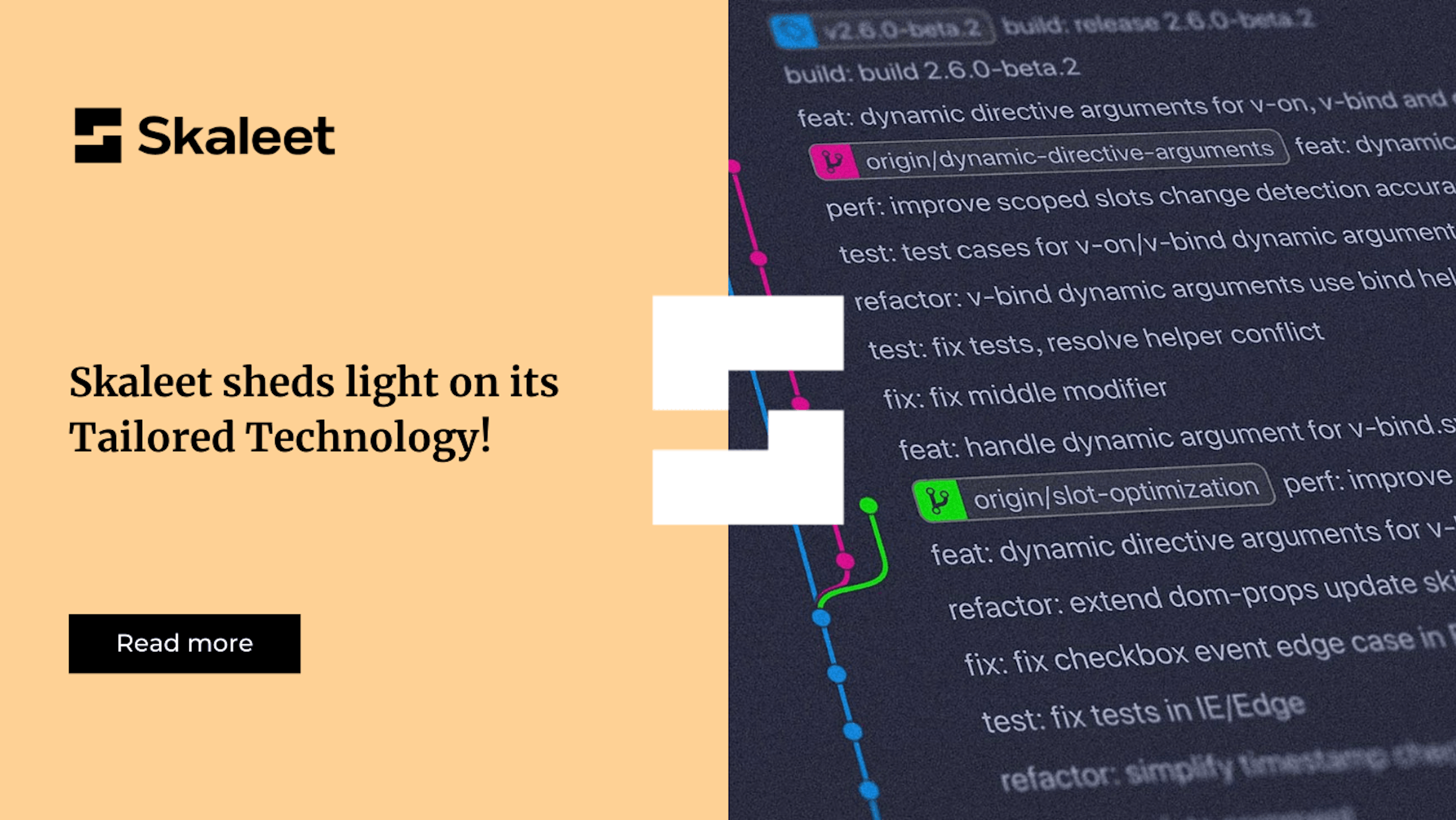
June 2nd, 2021 • Technology
Skaleet sheds light on its Tailored Technology 👨💻
In a world of constant technological change, the financial sector is no exception.
June 11th, 2021 • Neo banks

While a large number of fintech view themselves as neobanks, it is simply not the case because they are often payment institutions or payment service providers. It seems to us to be worthwhile to review the neobank term and figure out which licenses are available to become a neobank.
A fintech company is a startup offering innovations in the banking sector, particularly by providing financial services through digital means. As we go through the various financial institution licenses, the term “fintech” will be appropriate for payment institutions, electronic money institutions, and payment service providers. The so-called “Payment” license does not qualify an institution to be designated as a “neobank.” Only institutions holding a credit institution license may call themselves a “bank” or a “neobank”, such as Memo Bank, or soon Qonto.
Today, the number of new neobanks entering the market each year is 3 times greater than it was in 2016 (70 neobank launches worldwide in 2020 compared to about 25 in 2016). This neobanking revolution has largely been concentrated in Europe. The first players initially focused on the mobile and user experience, launching in the UK (Starling Bank), France (Qonto), Finland (Holvi), Germany (N26), and Russia (Tinkoff).
This exponential growth in Europe is a result of the European Payment Services Directive (PSD 1), which allows new institutions to enter the financial services market with less stringent approvals. PSD 1 came into force in December 2009. However, these new financial services are regulated in various ways. For example, there are limits on the scope of activities that institutions can undertake. Capital requirements are in place to reduce risk. Caps on interest rates protect customers. And regulatory and transparency requirements are in place to facilitate supervision. The entire regulatory framework is designed to bring stability to the economy and protect customers while bringing new innovations to market.
Consequently, you typically need a license before you can provide financial services. Licenses differ according to the scope of authorized activities and organizational requirements. They are usually issued by local regulatory authorities such as central banks or financial market supervisors, so-called National Competent Authorities—NCAs—such as the ACPR (France), the FCA (UK), or the BaFin (Germany).
Regulatory frameworks and licensing requirements vary considerably by jurisdiction and type of financial service. The choice of regulatory licensing depends on the value proposition, and business model presented.
The question then arises: Which license do you need to become a neobank?
A credit or banking license allows a financial institution to accept customer deposits and issue credit using customer funds. It allows a wide range of services but is also the most regulated. Simply put, these are “traditional” banks.
They may also offer other services: foreign exchange transactions; advice and assistance in asset management; services related to securities (and other financial products) such as investment, subscription, purchase and sale, payment options, and management of those payment options. Only institutions with a credit or banking license may call themselves a “bank” or a “neobank” (Bear in mind the recently enacted ACPR and FCA rules).
Banking licenses are issued by the relevant regulatory authority, typically the National Competent Authority (NCA). Who that competent authority is will depend on the geographical location of your company and the geographical markets in which you wish to operate. These may include supranational regulators, such as the European Central Bank (ECB), as well as local, national bank regulators such as the Saudi Central Bank (SAMA) or the Hong Kong Monetary Authority (HKMA).
Applying for a bank license can be a fairly complex and expensive option for a new digital bank. The advantage is that it allows a bank to provide a wider range of services, but this comes with more significant regulatory and compliance obligations and often with a greater capital requirement.
The application process for a banking license is also lengthy and can take up to 15 months depending on the jurisdiction. Often held by entrenched players, today, a portion of their clientele is turning to new institutions, namely payment institutions, because they offer digital services that are complete and intuitive or even offer more attractive pricing.
Many jurisdictions across the globe—through more lenient regulation—are embracing innovation and facilitating the entry of new digital players into their financial systems, all in an effort to modernize their financial services landscape and increase competition. This is also creating an excellent opportunity to gear up to launch a neobank in the future.
As part of this regulatory approach, new types of financial services licenses have been created. These are typically light versions of banking licenses designed to accommodate digital business models, thus allowing these institutions to offer financial services. These licenses usually come with more lenient regulatory and compliance standards. So-called “Payment” licenses are often associated with regulatory sandboxes that provide testing grounds for new business models.
The first option is to obtain an Electronic Money License (EMI), which supports digital payment services, including creating IBANs, as well as issuing electronic money (BIN Sponsorship - Credit Card) and management thereof, where the end-user will be able to maintain funds in the account. An EMI license allows licensees to provide the same banking experience to customers for everyday payments as does a full banking license. However, EMI licenses also have limitations.
An EMI license can be a cost-effective option for a new digital bank.
This less demanding application process also takes 6 to 12 months.
Legal fees range from €75,000 to €150,000 for the regulatory license application.
The average total cost of setting up the organization ranges from €1 to €2 million.
The second option is to obtain a Payment License (PI), which supports a wide variety of payment services enabling transactions to be carried out by card, mobile app, transfer, or direct debit. The PI also supports cash withdrawals, account deposits, foreign exchange transactions, and data processing (Open Banking players - Account Information Service Provider and Payment Initiation Service Provider). As with EMIs, PIs also have limitations...
On the one hand, they do not allow you to issue long-term credit, but you can offer short-term credit under specific conditions: Only loans repayable within a maximum of 12 months are allowed and only to customers who have an account with a payment institution. Within this framework, the payment institution manages the monthly direct debit transactions for the traditional bank that finances the credit. On the other hand, payment institutions do not allow customers to deposit checks. Lastly, and in contrast to EMIs, PIs cannot take custody of the client’s funds which must be deposited with a credit institution, where the funds are guaranteed up to €100,000 per client by the Deposit Guarantee and Resolution Fund (the FGDR - Fonds de Garantie des Dépôts et de Résolution).
A PI license is often the first option considered in order to be regulated.
The application process also takes 6 to 12 months.
Legal fees range from €20,000 to €125,000 for the regulatory license application (depending on the services you wish to offer).
The average total cost of setting up the organization ranges from €350,000 to €1.5 million.
Startups, or other organizations, do not necessarily need to hold these licenses on their own; they have the option of operating under the auspices of a licensed financial institution. Credit institutions, payment institutions, and electronic money institutions, approved by an NCA, may use agents whom they have commissioned to provide payment services under their responsibility and in another State of the European Economic Area. This makes it easier for startups to establish themselves and operate under a third party until they have achieved sufficient scale to obtain their own license.
There are many players (Banking-as-a-Service - BaaS) in the market that offer licensed financial services, for example, BIN Sponsorship for credit cards, account management, and loan origination. In fact, many neobanks operate a white-label debit card and e-wallet, or offer loans issued through third-party institutions.
Depending on the commercial agreement and the type of service, these usually require setup fees as well as a monthly subscription and/or a per-user fee. The advantage of the agent model is that it allows startups to bypass the lengthy and complex license application process and to operate profitably before reaching scale. It also allows them to quickly evaluate their strategic assets and test how they fit in the market.
The disadvantage is dependency on third parties, which comes with less flexibility and less control and understanding of the cash flows. A business case must be conducted to determine whether you should work with a partner or obtain your own license. Your level of scalability and timeframe are factors as well.
The banking landscape is undergoing profound change. As a result, it is strategically challenging for any financial institution to respond precisely to customer expectations. Enter Skaleet—maker of a Core Banking Platform (CBP) that enables payment service providers, as well as credit institutions, electronic money institutions, and payment institutions to accelerate the launch of new products at competitive prices. Skaleet achieves this by combining its deep knowledge and successful track record of effectively serving the needs of financial service providers with the Core Banking’s cloud-native platform. The result is a system designed with the agility and depth to respond to ALL changes, shifts, and trends in the market.
Innovation. FinTech. Digital Banking. Neobanks. Open Banking. Core Banking. Cloud.

June 2nd, 2021 • Technology
In a world of constant technological change, the financial sector is no exception.